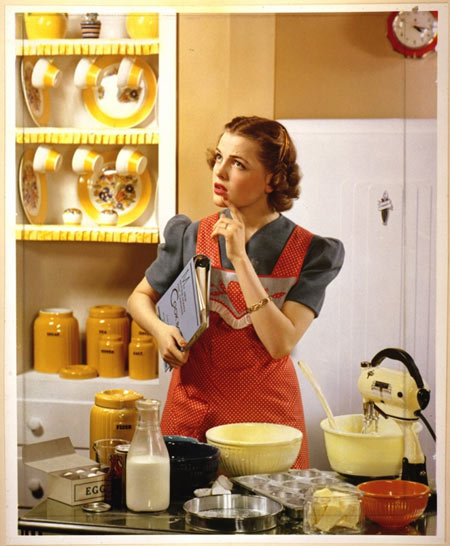当前位置: Language Tips> 英语学习专栏
一如正离子和负离子相辅相成,不善烹饪的我和如同美食家的她,在试做与试吃之间,也渐渐达成了某种平衡。

By Joan Donaldson
星靥 选注
Following my sophomore year of college, an older woman hired me to be a housekeeper at her summer cottage on Lake Michigan.[1] Miss Bartow had been one of the first American women to earn a doctorate in chemistry and had taught that subject at the University of Illinois. Every summer she traveled north to Michigan.
While studying for final exams, I daydreamed about her private beach, until suddenly other thoughts rippled[2] through my mind. Housekeepers must cook; Miss Bartow would expect me to produce three meals a day. I scribbled a note to her explaining that I only knew how to make pancakes, chocolate chip cookies, and grilled cheese sandwiches, but I would try to cook what she liked.[3]
Miss Bartow wrote back, “You’re a geologist[4]; cooking is like chemistry.”
Mostly what I could remember from geochemistry was how ions shared their electrical charges in order to create stable situations.[5] While writing out the chemical formula for the mineral pyrite (FeS2), my professor had pointed out that when the iron and sulfur bonded, their charges balanced each other.[6]
I felt like a negative ion desperately seeking a positive ion.[7] But too soon, the big day came, and I moved to the cottage.
Miss Bartow handed me The Joy of Cooking. “Study this, and you’ll learn to cook.”
Sitting on my beach towel, I read her cookbook, but the mass of recipes was overwhelming and the symbols confusing.[8] Even worse, to create a dish, such as cabbage rolls, I had to flip to various sections in order to reference the techniques necessary.[9]
I stared at the waves. I needed easy recipes for main dishes, and I needed them now.
I called my mother. “Could you please send me some simple recipes, and could you please ask the women at church for some, too?”
Throughout my childhood, a cluster of surrogate aunts from my church had nurtured me.[10] Mary DeBuck had introduced me to quilting[11]. While cleaning up after church suppers, Mrs. Stankowitz had listened to me ramble on[12] about school, and Mrs. Carlson had encouraged me to write. Mrs. Means had even accompanied our youth group on a work camp to a Navajo reservation and had spread her sleeping bag among our gaggle of teenage girls.[13] Like my parents, these women wanted me to succeed in life.
My mother sent a stash[14] of recipe cards, and letters from her women friends arrived. Sometimes I had to copy handwritten recipes into my new notebook. Some people sent recipes clipped from magazines that featured “cooking for two.”
I tried Peg Bullock’s chicken casserole[15] and re-created my mother’s potato salad. I kept reading and experimenting. Miss Bartow never complained. I suppose it was because she had taught undergraduates for decades. She was used to being patient.
One August evening, I placed a small salmon pie[16] in front of her. Steam rose from the biscuit topping, and the white sauce oozed over the glass dish.[17] Miss Bartow sniffed[18]. The air smelled of celery and butter.
“One of my favorite dishes! from The Joy of Cooking,”she said.
“Page 241,” I chirped, and buttered a biscuit.[19]
Miss Bartow was right. Cooking was like chemistry, and thankfully the women of my church had provided a diligent undergrad with the necessary resources to successfully balance the culinary equation.[20]
Vocabulary
1. sophomore: 大学二年级;housekeeper: 女管家;cottage: 小别墅;Lake Michigan: 密歇根湖,北美洲五大湖之一。
2. ripple: 感觉等扩散。
3. 我草草写下一个纸条,向她解释我只会做烙饼、巧克力奇普饼和烤奶酪三明治,但我会尽量做她喜欢的。
4. geologist: 地质学家。
5. 我能记得的地球化学主要就是离子如何共享其电荷以创造其稳定位置的。
6.在写出矿物黄铁矿(二硫化亚铁)的化学公式时,我的教授就指出:当离子和硫磺相结合时,它们的电荷会彼此达成平衡。
7. 我觉得自己就像一个正在拼命寻找正离子的负离子。
8. recipe: 菜谱;confusing: 令人迷惑的。
9. 更糟糕的是,为了做一道菜,譬如甘蓝卷,我不得不翻查该书的多个地方以参考必要的技术。
10. surrogate: 代理人,代用品;nurture: 养育,照顾。
11. quilt: v. 缝被子。
12. ramble on: 闲聊,漫谈。
13. Navajo reservation: 瓦侯保护区,瓦侯族人口约25万,维持著放牧的生活方式,是目前美国残余印地安人中最大的一族;gaggle: 〈口〉散乱的一群。
14. stash: 储存。
15. casserole: 焙盘菜,砂锅菜。
16. salmon pie:鲑鱼派。
17. 蒸汽从松饼顶端冒出来,还有白色的酱汁从玻璃餐盘中溢出来。Ooze: (浓液等)缓缓流出,渗出。
18. sniff: 以鼻吸气,嗅。
19. chirp: 尖声地说,啧啧咂嘴;butter: 抹黄油于……上。
20. diligent: 勤奋的;undergrad: 〈口〉大学肄业生,(尚未取得学位的)大学生;culinary equation: 烹饪方程式。
(来源:英语学习杂志 编辑:丹妮)
上一篇 : 夜
下一篇 : 青少年应该如何选择饮食?
电话:8610-84883645
传真:8610-84883500
Email: languagetips@chinadaily.com.cn